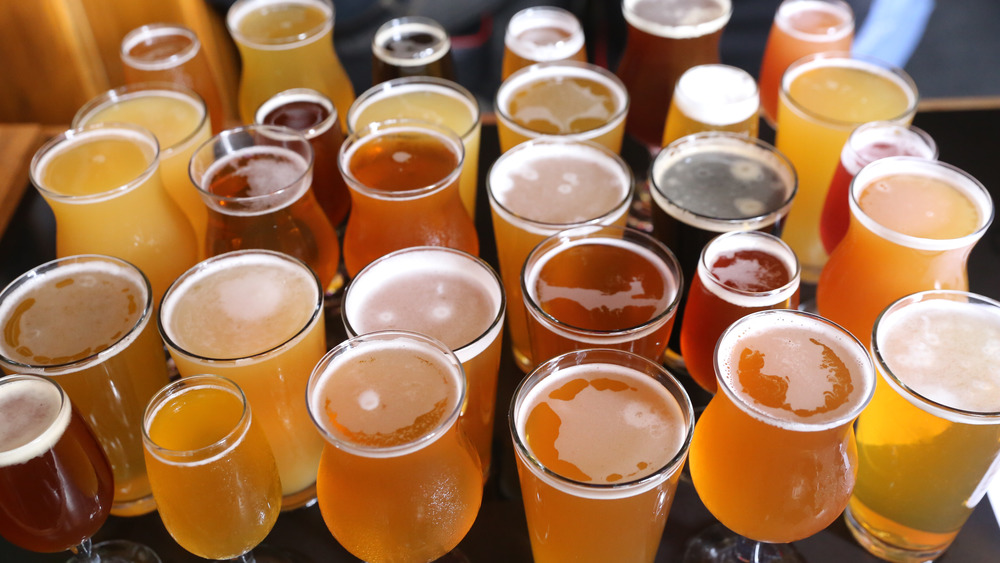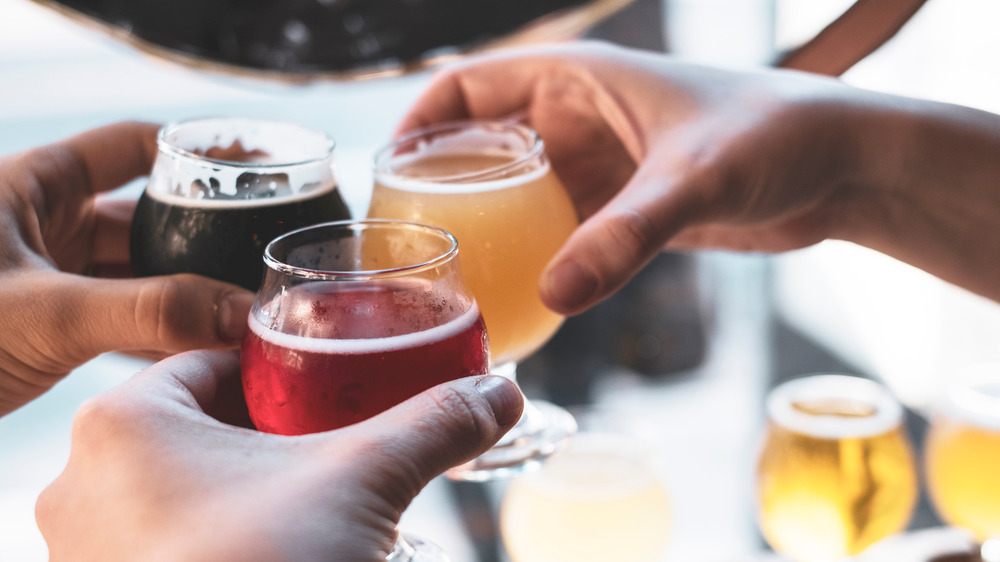Everything You Need To Know About The Rise Of Sour Beer
Sour beer has been around for centuries, but only in recent years has it become a popular option to rival IPAs or pilsners. In the early days of beer-drinking, all beer was essentially sour beer. More common types of beer utilize careful sterilization processes and specific strains of yeast, but sours get their unique flavor from a complex process wherein wild yeast and bacteria grow in the beer while it ferments (via VinePair). Then, the beer is put in wooden barrels where metabolic reactions produce ethanol, acids, and esters that contribute to the final product's flavor, according to Phys.org. Brewers can even use the barrels (or sometimes other containers) in which the beer ferments to add new flavors, such as vanilla.
Sours have a distinctive taste that differs from most beers, making them an excellent option for both the beer-averse and beer experts alike. Sour beers differ greatly in taste, so if you find yourself dissatisfied by one, it might be worth trying another. We've lined up some of the best, so you'll be sure to find one (at least!) you like.
Different kinds of sours
Most sours fall into one of five different types. Flemish reds are one of the most popular and well-known beers of all, according to Thrillist. These sours share many flavors with oud bruins; Flemish reds are usually aged in oak barrels, while oud bruins use stainless steel instead. Flemish reds are often quite tart, with notes of black cherry and currant. Oud bruins lack this fruitiness as well as some of the harsher acidity of Flemish reds.
Lambics are another popular kind of sour, particularly geuze lambics, a Belgian beer. These sours are a blend of different fermentations that sit in barrels soaking up flavor for as much as three years. Geuze lambics aren't quite as tart as Flemish reds or oud bruins, but they're still sour enough to earn the label.
Both gose and Berliner Weisse are sours that brewers and bartenders often mix with berries or fruit syrups to balance out the tart flavors. Both are light, bright beers that have recently become popular in craft breweries across the country.

